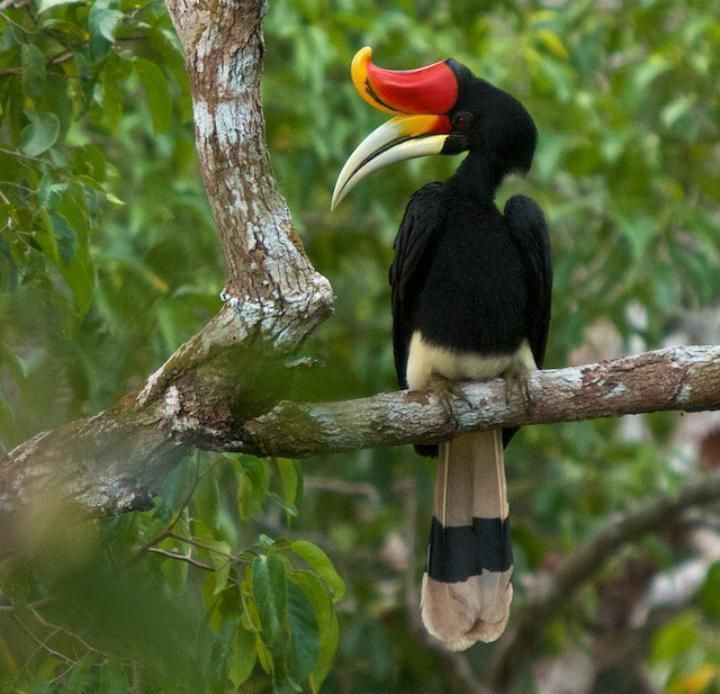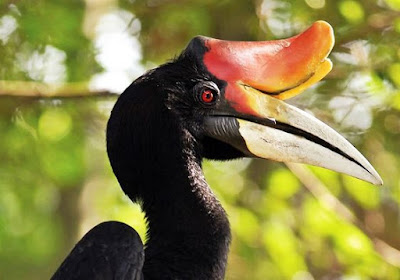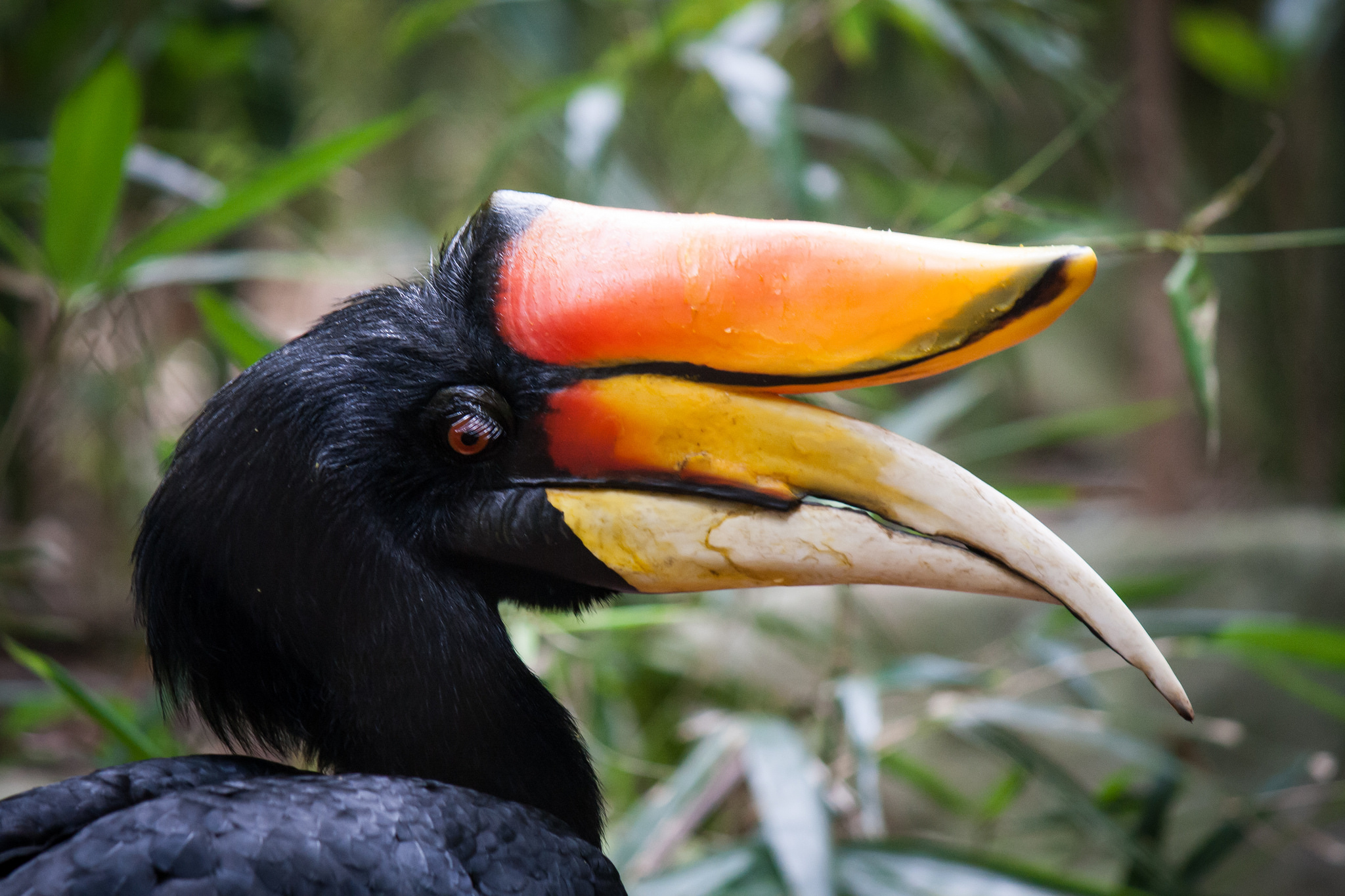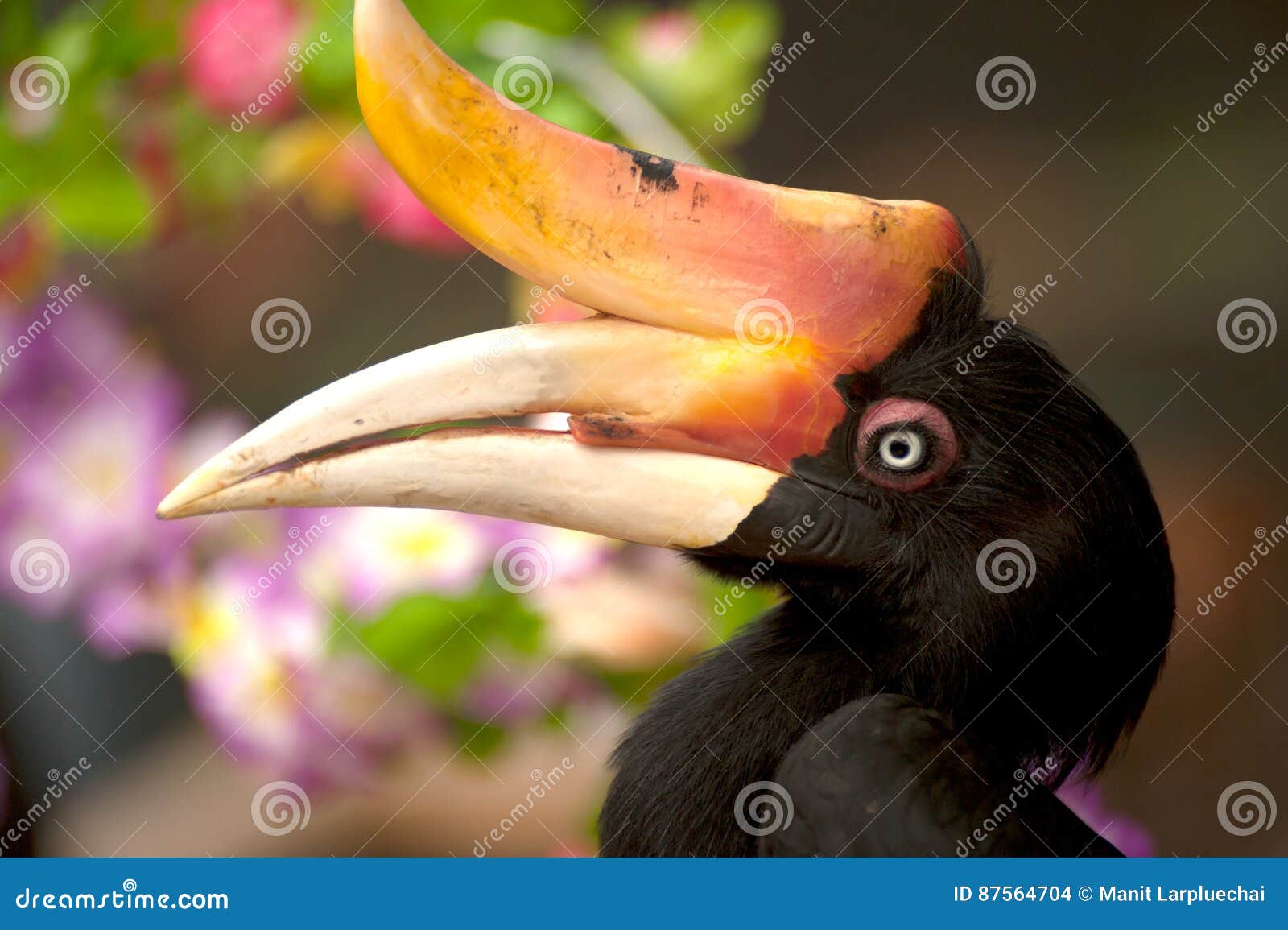


One blow of the bird’s beak, backed by this natural hammer on the end of the supple neck, would probably be fatal to a man if it struck him on the head-which may be one reason why our zoos do not exhibit the Helmeted Hornbill. The bones of the skull behind it are cleverly formed so as to brace the casque and give it a maximum of striking power, while cushioning the brain against the shock of impact. From Elliot’s Monograph of the Bucerotidae.īut with all its other peculiarities, the most unique thing about Rhinoplax vigil is its casque or “helmet” Not present on the very young birds, this gradually grows upward from the base of the beak, over the front of the skull. Idealized portrait of the Helmeted Hornbill. But presumably it behaves like its other hornbill relatives which means that the male shuts up his mate in a hollow tree, plastering up the entrance to keep her a prisoner until the young ones are hatched and able to fend for themselves meanwhile he comes at intervals to feed mother and young with packages of partially digested fruits served up in the cast-off lining of his gizzard. Due to the difficulty in observing this bird, almost nothing is known of its nesting habits.

Rhinoceros hornbill country series#
However it is often heard, for its call, a series of repeated, gradually accelerating toks ending in a burst of insane laughter, can be heard for nearly a mile. Furthermore, its two excessively long tail feathers moult alternately, so that only one is presentable at a time.Ī fruit-eating bird, it spends its life in the highest trees and hence is seldom seen. And as the bases of its flight feathers are left bare, it makes a terrific noise when flying which has been compared to the sound of an approaching train. It has no feathers at all on most of its neck and back. Even a devoted ornithologist has described it as “a perfect nightmare of a bird.” Measuring nearly five feet from the end of its beak to the tip of its tail, it has coarse plumage, primarily of a dirty reddish black, except tor a white stomach and white bands on its tail. It is not only one of the largest birds in the jungles of Southeast Asia, but it is certainly the ugliest, in spite of the highly complimentary portrait of it shown in Figure 2. The Helmeted Hornbill is without doubt the most extraordinary member of a remarkable family. (The casques of several other species of Hornbill are far more imposing, but they are hollow or filled with spongy tissue.) The single exception is the Helmeted Hornbill, Rhinoplax vigil. This is contained in a solid casque or epithema at the front of the head above the beak.

There are at least sixty varieties of Hornbill birds in the Eastern Hemisphere, but only one of these bears the “ivory,” a hard, carvable substance which is almost as dense as elephant ivory. Thus we are very fortunate in having a fine example in the University Museum (see Figure 1). Carvings in it were always highly valued and they have now become exceedingly rare. The strange substance called “hornbill ivory” was formerly an important commodity in Asiatic trade, and it was extensively carved, especially in China and the East Indies.


 0 kommentar(er)
0 kommentar(er)
